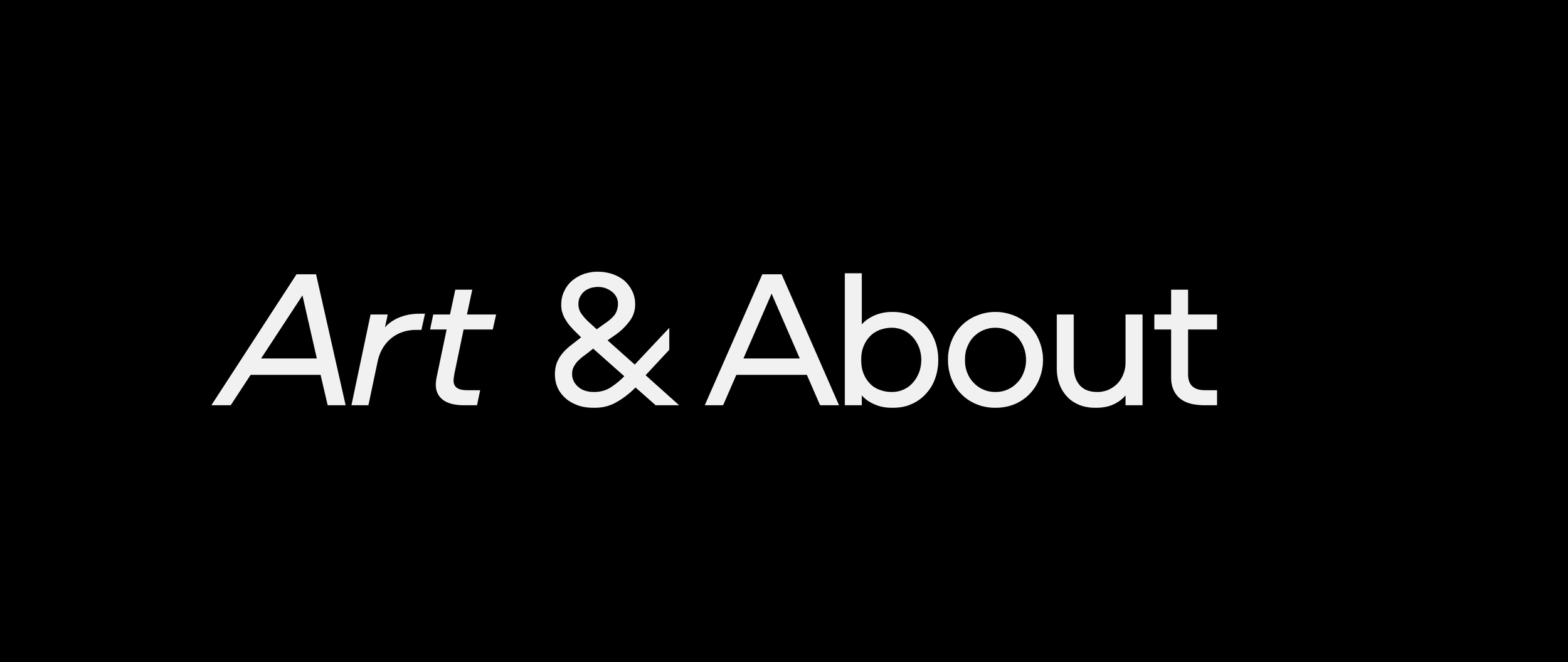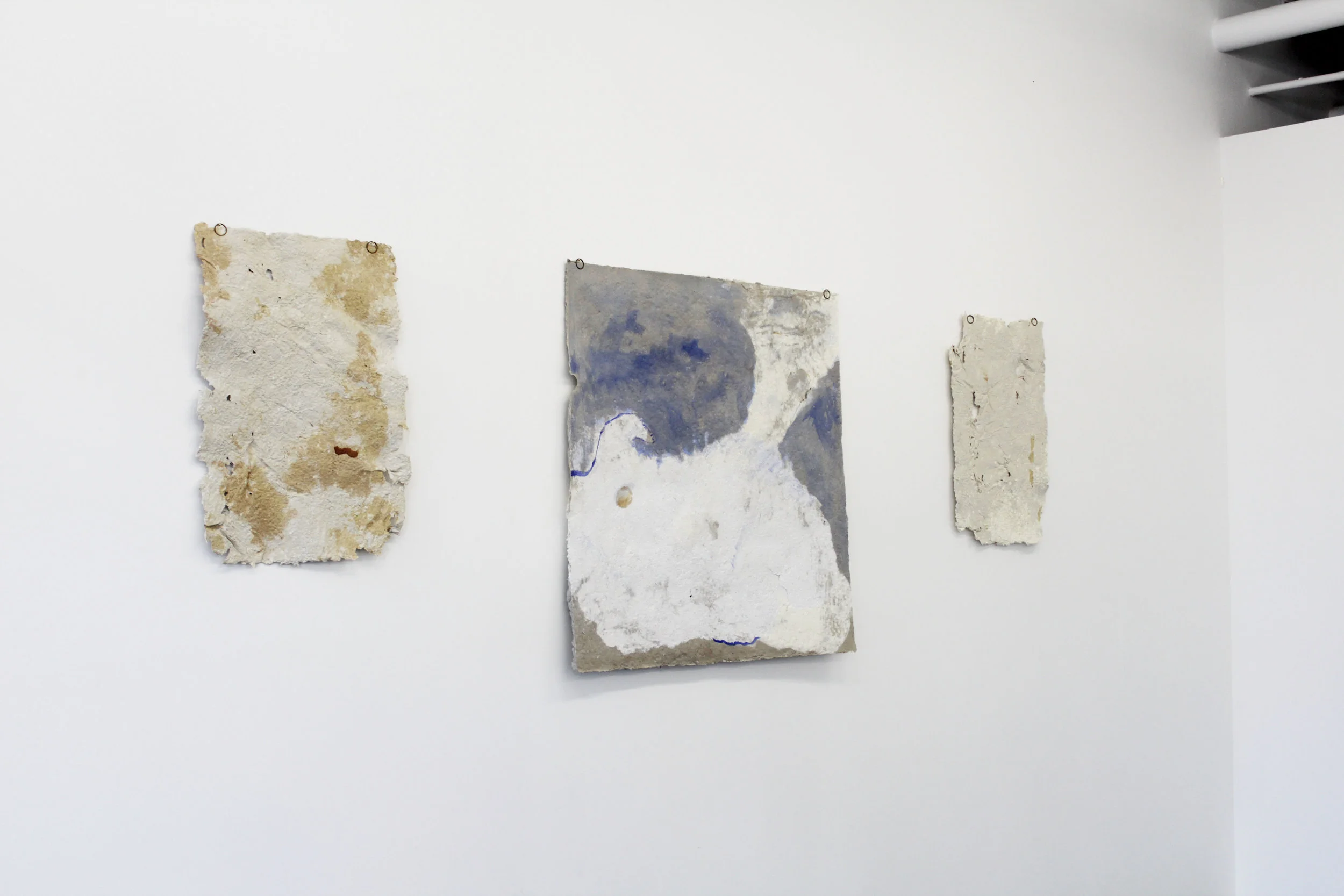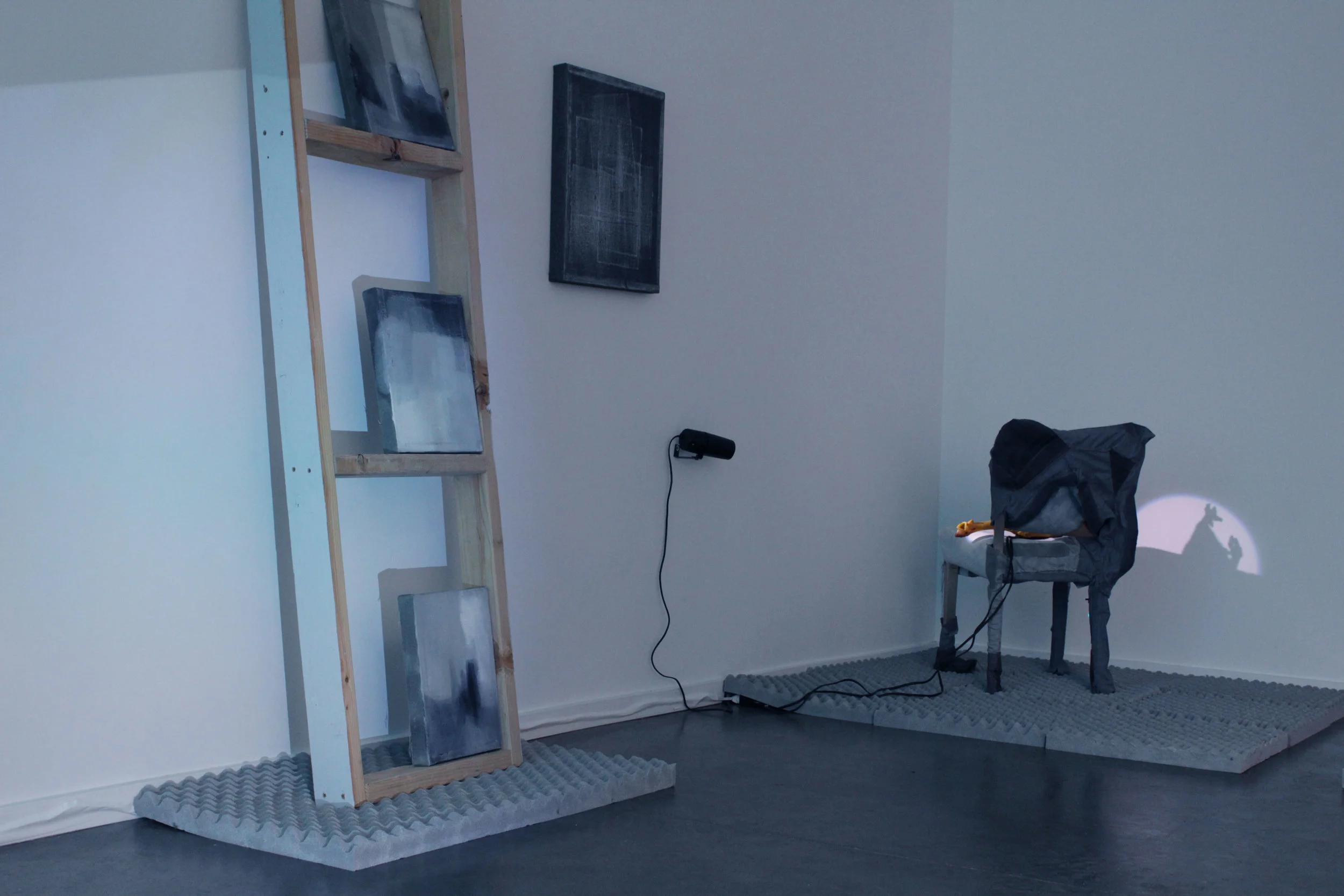Luiza Lukova + Emma Christ after Blue on Blue on Blue
BY ASHLEY GIFFORD
In early August, May Barruel announced in a press release that she “handed over Nationale to long time volunteers Luiza Lukova & Emma Christ for their curatorial debut.” Blue on Blue on Blue, highlighted work from a different artist every week for three weeks. The three artists selected — Marguerite Bailey, Brit, and Maggie Heath — “present a variety of mediums and means of expression, while still succinctly embodying a unified theme that allows their shows to live sequentially in the space.” Divided into three parts, each week-long exhibition seeks to transform the gallery with regards to materiality, presence, self-portraiture, and the color blue. This rapid exhibition turnover within 3 weeks, their choice of artists, and overall spirit made us want to learn more about the duo and their curatorial efforts.
Week 1: Marguerite Bailey. Photo by Luiza Lukova + Emma Christ
Please tell us a little about yourselves…
Emma Christ (EC): I’m a twenty-two year old Portland native. I am in my last semester at Reed College where I study studio art with a focus on sculpture, fibers, and installation. I previously studied at Bard College for two and a half years, where I majored in photography and written arts. I’ve been working at Nationale for the past four years!
Luiza Lukova (LL): I was raised in Kentucky, by way of Bulgaria, but made my way out West about five years ago when I came to Portland for school. I received a double major in English and Art History that focused primarily on Post-WWII literature, Modern art and critical theory. Finding a way to meld all of those passions together, I have been with May at Nationale for the last three years, working in a variety of capacities, before being granted this generous opportunity to curate.
What's your background in art and curation?
EC: As a practicing artist, my relationship with art and curation is heavily influenced by my inclination to approach work personally and directly. I tend to focus on the materiality of an artwork, and how it affects the viewer. That being said, I do have a background in curation as a curatorial intern at PICA, as well as serving as co-founder and editor of “The Yolk”, which was an online exhibition and archival space for emerging artists, that has allowed me to develop an analytical approach to art exhibition.
LL: My background in art is more historical and archival, as opposed to a studio practice. As a writer, I tend to approach work more analytically, and am constantly considering how to speak about work in a way that is appealing and applicable to a larger audience. Semantics notwithstanding, a press release can at times be just as vital to a successful exhibition as the pieces being shown. Personally, I write poetry and prose, and professionally I write art criticism. This was both mine and Emma’s curatorial debut which was very exciting! We brought very different and very valuable skill sets to the execution of the shows, her with installation and preparator skills, myself with event management and marketing, which really came together quite nicely.
Luiza Lukova + Emma Christ
What were the motivating factors for wanting to do three different shows every week for three weeks? And is there anything you learned from this experience you can share?
LL: I think the initial drive to do three shows in three weeks, with such a rapid turnover rate, was a result of wanting to maximize our potential with the space and open it up to as many faces as possible. We dabbled with doing just one solo show, but the pressure of choosing just one artist felt too limiting. So we also considered doing one group show, with our three artists, but we felt that would be too restrictive of the creative imagination of our respective artists. As a result, we came up with this group show, still under one title, but affording each person their space in which to make. While this did end up cutting down the longevity of the shows since each were only up for seven days, we feel it did allow for more leeway in terms of breadth of space and potential. I will say, this pattern isn’t necessarily sustainable in the long-term! De-installing one show and putting up the next in less than twenty four hours certainly did horrors to my caffeine intake for the month, but it also lent an excitement and urgency to these crazy fast transitions. There was always something exciting to experience and something new to add to a to-do list.
EC: Luiza said it perfectly. We both felt strongly about wanting to open the space up to multiple artists, while still providing each artist with the room to fully manifest their vision. I agree that, in the long run, the pop-up style exhibition isn’t the most sustainable. Both Luiza and I have other jobs too so we were definitely balancing a lot, especially during days when we were doing rapid de-installs followed by re-installs. Nevertheless, it was such a fulfilling experience every stressful moment was followed by recognition and appreciation for how happy we were with what was being created.
What type of artists and artwork did you want to highlight in "Blue on Blue on Blue?"
LL: A large impetus for “Blue on Blue on Blue” was to bring in younger artists into the space whose work focused on the transitive. Considering each person was afforded one week, the work we strove to bring into the space was bold and loud and engaging. Our goal was to excite the public with new creative work that was both introspective and affordable. With Marguerite’s paper paintings, the materiality of her process, from creation to execution was unprecedented; each step of the making process was accounted for, from making her own canvases to her use of paintbrushes made from her own hair. Brit’s paintings were topical and hard-hitting; I saw gallery-goers so transfixed with the minutiae and realness of the works that they would stay in the space, looking and reading, for upwards of forty-five minutes. Maggie closed out the show with her installation-turned-painting show which was something Nationale hadn’t seen in some time. Her work was cheeky, playing with light and video and (non) materiality in a way that was very powerful and completely transformed the gallery. These were the artists that we wanted to highlight -- young creatives who were unafraid of pushing their own, and the gallery’s, boundaries.
EC: To piggyback off of what Luiza said, we were focused on featuring artists that were pushing boundaries within their mediums in ways that would instantly engage their viewers. All of the artists, Marguerite, Brit, and Maggie, successfully navigated the gallery space in such distinct, yet cohesive ways from one another, it was really incredible to see how these three artists who weren’t connected to each other outside of the show were creating work that flowed seamlessly into one another. That was huge for us, to showcase separate and stylistically distinct artists in a manner that wasn’t disjointed or overwhelming, and I believe the show was successful in that respect.
Week 2: Brit. Photo by Luiza Lukova + Emma Christ
What have you learned from creating and putting together curatorial programming that would change every week for 3 weeks?
EC: Choosing to have such rapidly successive exhibitions definitely forced us to be more deliberate in our decisions about artists and how we wanted to exhibit them. I feel having three artists featured so closely together under a single heading taught us seek out deeper themes and similarities to better weave a commonality between them. From a planning perspective, it encouraged us to find creative ways to publicize the shows to get the word out. Luiza had the idea to make tie up all all three show cards in a bundle with blue string (like little packages) so they’d draw more attention when people saw them in the different shops we placed them around the city. Working on “Blue on Blue on Blue” also reaffirmed what both Luiza and I (and anyone who’s lucky to know May) already knew, which is that May is truly someone to admire. She works so hard and is so dedicated to Nationale and engaging with the art community, and she does so on her own. She really is incredible.
LL: Oh boy, what haven’t I learned! For starters, I have even more respect and awe for May, who does what we did, but all by herself and all year round. Having Emma by my side was a godsend, I couldn’t have done it without her. I agree with what she says about being more deliberate -- when you’re placing three artists in close proximity to one another, it is just as easy for differences, as it is for their commonalities to become more transparent. And it falls to the curator(s) to meld it all into one cohesive unit that still retains the individuality of all the parts. There was so much in the day-to-day operations that led to growth and learning that it is difficult to narrow it down. Plus, no one wants to hear about the benefits of one spackle over another, lets be real. However, I will end with this: there was so much communal labor and love that was put into this project, and I feel so lucky and grateful for it all. My hope is that each of our artists feel just as pleased with the final product as we do.
Week 3: Maggie Heath. Photo by Luiza Lukova + Emma Christ
Is there anything exciting you have coming up that you'd like to share with us? (individually and/or together)
EC + LL: Perhaps we will come back as a curating duo with some more exciting programming in the near future! But for now, be sure to stay in touch with May’s exhibits at Nationale. This fall/winter season is shaping up to be a truly incredible one with Nathan Paul Rice’s Masterpiece / Good Job / Big Shit currently on view, followed by new work by Francesca Capone and Ty Ennis, respectively, to close out the year!
Connect with Lukova & Christ:



